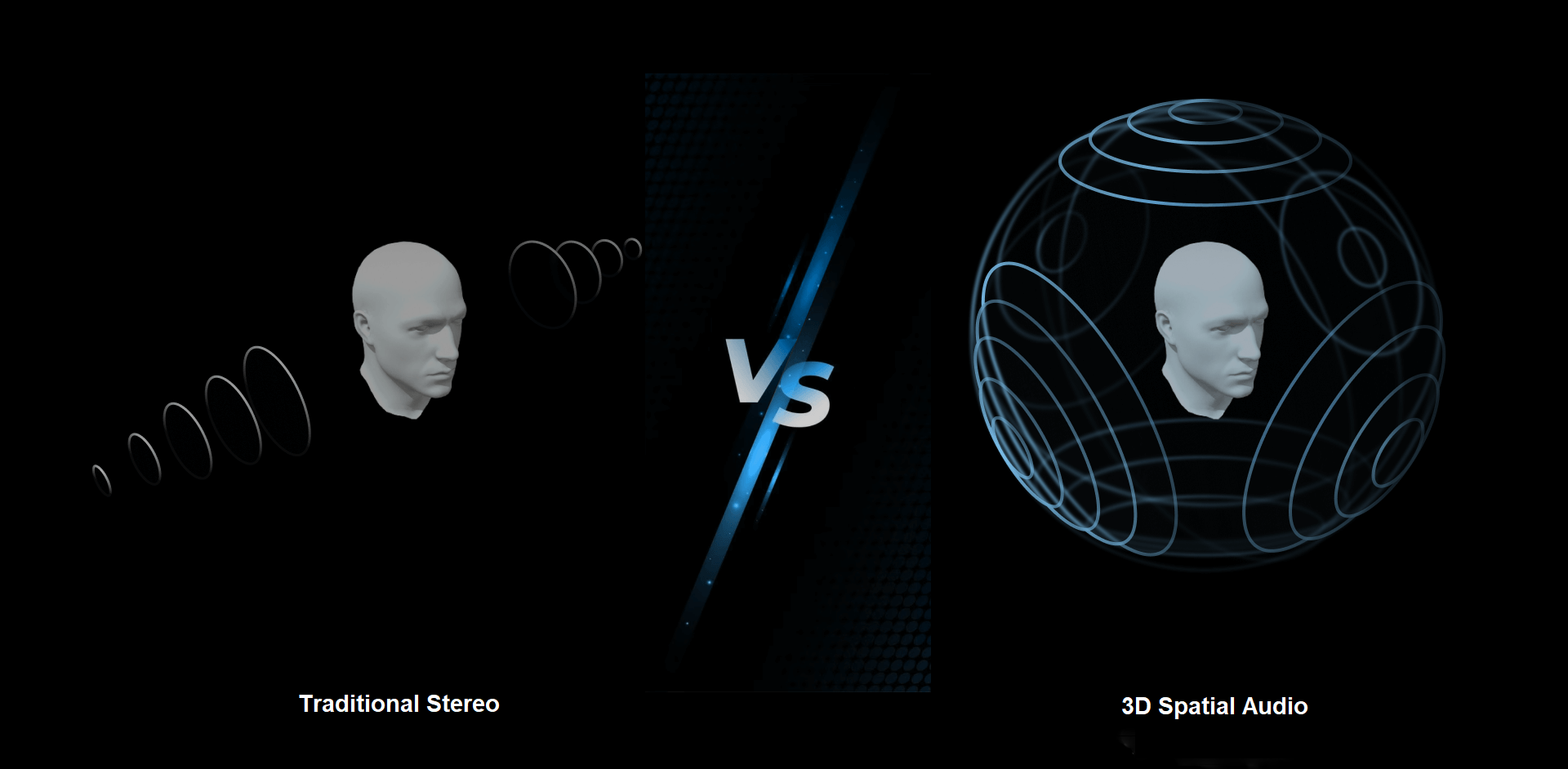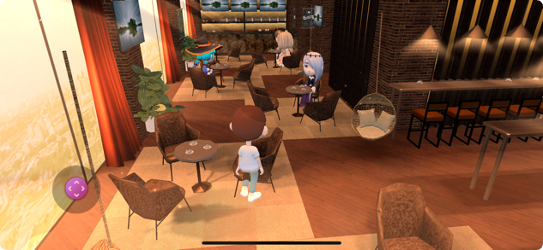3D Spatial Audio
3D Spatial Audio brings the real-world sound experience to the virtual world, providing an immersive audio experience for users. Agora's spatial audio technology enables you to simulate the propagation characteristics of sound in a physical environment within a virtual interactive scene.

-
Ultra-realistic space shaping effect
Utilize technologies such as range audio, sound blur, and air attenuation simulation to perfectly simulate the real auditory experience.
- Set the spatial positions of users in real time to give a sense of change in the distance, direction, and orientation of other users.
- Update the spatial position of the media player, to add a sense of space to background sounds, accompaniments, and other media resources.
- Add 3D Spatial Audio effects such as sound blurring and air attenuation by adjusting audio settings to perfectly simulate the real audio experience.
-
3D High Fidelity
- Sound effects are processed and rendered based on the facial orientation, sound source orientation, and relative position of the sound source in 3D space.
- Supports 48 kHz full-band sampling and 3D high-fidelity audio processing and rendering.
-
Multi-platform support
Supports iOS, Android, macOS, Windows, Web, Unity, Flutter, React Native, Electron, Unreal and other platforms.
-
Ultra-low latency, low power consumption, and low cost
The spatial audio algorithm adopts an advanced front-end processing mode and synchronizes spatial coordinates through cloud services. The end-cloud collaborative processing mode effectively reduces overall latency and power consumption.
Compared to traditional stereo, which relies on left and right channels, spatial audio technology greatly enhances the depth and realism of sound. The following table highlights these enhancements:
| Feature | Traditional Stereo | Agora Spatial Audio |
|---|---|---|
| Dimensionality | Left and right dimensions | Represents sound in a full 3D space using the x, y, and z axes of the world coordinate system, corresponding to right, top, and front dimensions |
| Spatial Perception | Adjust the volume of the left and right channels to create a spatial sound | Utilizes advanced spatial audio algorithms to create a realistic soundscape by manipulating parameters like distance, direction, and orientation |
| User Experience | Flat | Immersive, three-dimensional, and natural, delivering a realistic auditory experience |
Applicable scenarios
Social Chat
In the Voice Chat Room app, user avatars are arranged in a grid, each assigned specific coordinates and a direction. During interaction, the volume and direction of each user's voice correspond to their location. As you drag your avatar across the screen, the volume of another user decreases as you move away and disappears when you exceed a certain distance, simulating real-world sound propagation.

Games & Metaverse
In 3D environments like games and the Metaverse, spatial audio technology can enhance experiences in the following ways:
| Audio Blurring | Enable audio blurring for specific users or media. For example, in a coffee shop, use this to create a "whispering" effect where other users hear muffled conversations. |
| Range Audio | Set audio reception range based on the scene. The farther the sound travels, the fainter it becomes. Adjust the attenuation factor for different effects:
|
| Ultra-Realistic Space | Assign virtual characters 3D coordinates for a realistic spatial experience, including:
|
| Sound Insulation Area | Create sound-insulated zones with customized sound attenuation. When a receiver outside the area listens to the sound source in the area, they experience the attenuation effect of the sound in the real environment on encountering the building partition. For example, in a KTV scene, sounds from inside a box can be faintly heard from outside. Opening the door instantly amplifies the sound. |

Online Meetings
In virtual meetings, spatial audio can arrange users around the host, with each microphone having directional sound. This setup mimics a real-world conference room, providing a more immersive and less tiring experience compared to traditional online meetings.

This feature guide is not yet available.